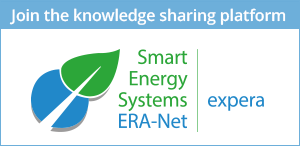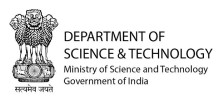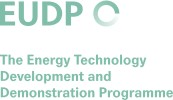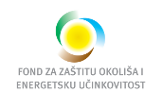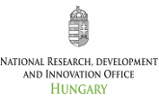Integrated Regional Energy Systems
Regional and local energy systems and networks are composed of locally and regionally available energy sources, built infrastructure, specific production and consumption characteristics as well as user and consumer structures from different sectors, including the transportation system. They have an important role to play in reaching the energy union targets. They are part of the living environment of citizens, including, in some cases, highly ambitious clean energy goals of specific communities and regions. They provide appropriate services to consumers, customers and citizens as well as to the overall European energy system to help ensure the security of supply, maximise the primary energy efficiency and deliver a high share of renewable energy.
Local and regional energy systems will have to cope with a fundamental transformation in the coming years, responding to current drivers such as the increasing uptake of new and improved technologies for decentralised energy systems, the boosting digitalisation and associated business models as well as present societal trends. In that respect, regional and local innovation ecosystems will be very important1. Solutions could be tailor made for regions below the size of a NUTS 2 region (which is 800.000 inhabitants and more). It could be the case that a smaller political and planning entity (starting from 150.000 inhabitants. i.e. NUTS 1) will better fit the needs when developing a regional energy system. Especially in rural contexts, smaller regions often allow for better involving the right stakeholders and creating the necessary buy-in.
In its "Clean Energy for All Europeans" legislative proposals (the so called "Winter Package"2, covering energy efficiency, renewable energy, the design of the electricity market, security of electricity supply and governance rules for the Energy Union), the EC particularly highlights specific drivers and elements of regional and local energy systems. Not the least, the EC Winter Package recognises the potential of regional approaches, when it calls for "methodologies to assess security of supply and to identify crisis scenarios in the Member States and on a regional level, to conduct short-term adequacy assessments, to establish risk preparedness plans and to manage crisis situations."
1 Regional Innovation Ecosystems, Learning from EU Cities and Regions, Committee of the Regions, EU, 2016
2 COM(2016) 860 final, Clean Energy For All Europeans, Brussels, 30.11.2016
The Three Dimensions of Integration
Implementing smart and integrated energy systems requires not only technological innovation, but also organizational innovation, new business models, new or reconfigured value chains, new actors in the research and business landscape of energy services and technologies as well as a better integration of different types of end-users into the energy system. A variety of entrepreneurial initiatives and partnerships among multiple actors are needed to speed up the implementation of smart and integrated energy in society. Integrated initiatives are needed to support social, institutional, organisational and market innovation in the energy sector including the intersections between energy supply, energy efficiency, and new user practices. Integration can be described along the following three dimensions:
Smart Energy System Integration. From a technical perspective, new solutions must optimise the integration of renewable energy, provide infrastructure that can host a large number of distributed generation units, increase flexibility by efficiently integrating different energy carriers as well as utilising (local) storage, supply side coordination and demand side response. They should also provide technology service systems that support highly dynamic business processes with a large number of participants enabling the implementation of complex business models serving different market participants such as individual consumers and prosumers or customer groups as well as system operators, facility managers, energy suppliers, service providers and aggregators.
Innovation Ecosystem Integration (integration with local & regional development). We need to better understand local and regional processes and the implementation paths of innovative energy systems. Beyond the well-established RDD stakeholders from industry, research institutes and universities, key players of the local and regional energy and innovation eco-system will have to be involved. Supporting new cooperative approaches as well as common standards will not only strengthen local and regional transition dynamics and entrepreneurship, but also enable steps towards EU level solutions in the integration of energy systems. This will help sustain European industrial leadership in sustainable energy solutions worldwide while paving the way to a low-carbon economy.
Cross sectoral integration. On a local or regional level, smart energy activities often involve multiple economic sectors. Particularly that means cross sectoral integration of smart energy systems and energy transition processes with transport (e. g. distribution grids for optimal charging of e-mobility vehicles and using the storage capacities of e-mobile fleets) or industry and trade (e.g. data centres requiring electricity and providing waste heat, enterprises or stores using their large thermal stores for excess electricity and balancing the electricity grid), or municipal infrastructure (e.g. heating and cooling networks, water supply and sanitation, public transport, buildings, street lightening) or agriculture (e. g. farms as facilities to generate or store energy).
With its initiative on integrated regional and local energy systems, ERA-Net Smart Energy Systems will establish a supportive and facilitating coordination platform to enable sustainable joint programming and alignment of national and regional RDD programmes. The funding partners involved, via two joint calls, will initiate and fund transnational RDD projects, fostering the cooperation of pioneer regions across Europe.
The RegSys initiative will organise a knowledge community to utilise the online platform expera that has been developed by ERA-Net Smart Grids Plus, enabling coordinated cooperative work of a significant number of participating experts from various backgrounds. RegSys will be committed to openness and diversity in terms of disciplines and perspectives as well as gender equal representation of experts and project teams. These aspects will be taken into consideration at all stages of development for the initiative.
The RegSys initiative will implement co-creation on a programme level, developing best practise cooperation formats for supply and demand side oriented innovation strategies. This will be facilitated by collaboration with Associated Partners, acting as intermediaries to regional and local innovation stakeholders and need owners, as well as attracting additional funds for market uptake measures. Concrete examples of solutions that RegSys will develop, implement and verify include:
- a power provision model that directly links people or enterprises that generate electricity to those using it
- an Energy Management System for using mobile battery storage for grid balancing including the development of respective business models
- a power-bank which allows citizens to store their own excess energy (e. g. from PV) in a battery in their city quarter or district for later retrieval
- an open service platform that allows multiple small enterprises in distant regions to implement their business solutions and market them on a European level
- a digital tool that allows small enterprises to better understand the contexts of other local and regional energy systems to assess market potentials and find partners (technology, investment, marketing) for their products and services
and many more.
